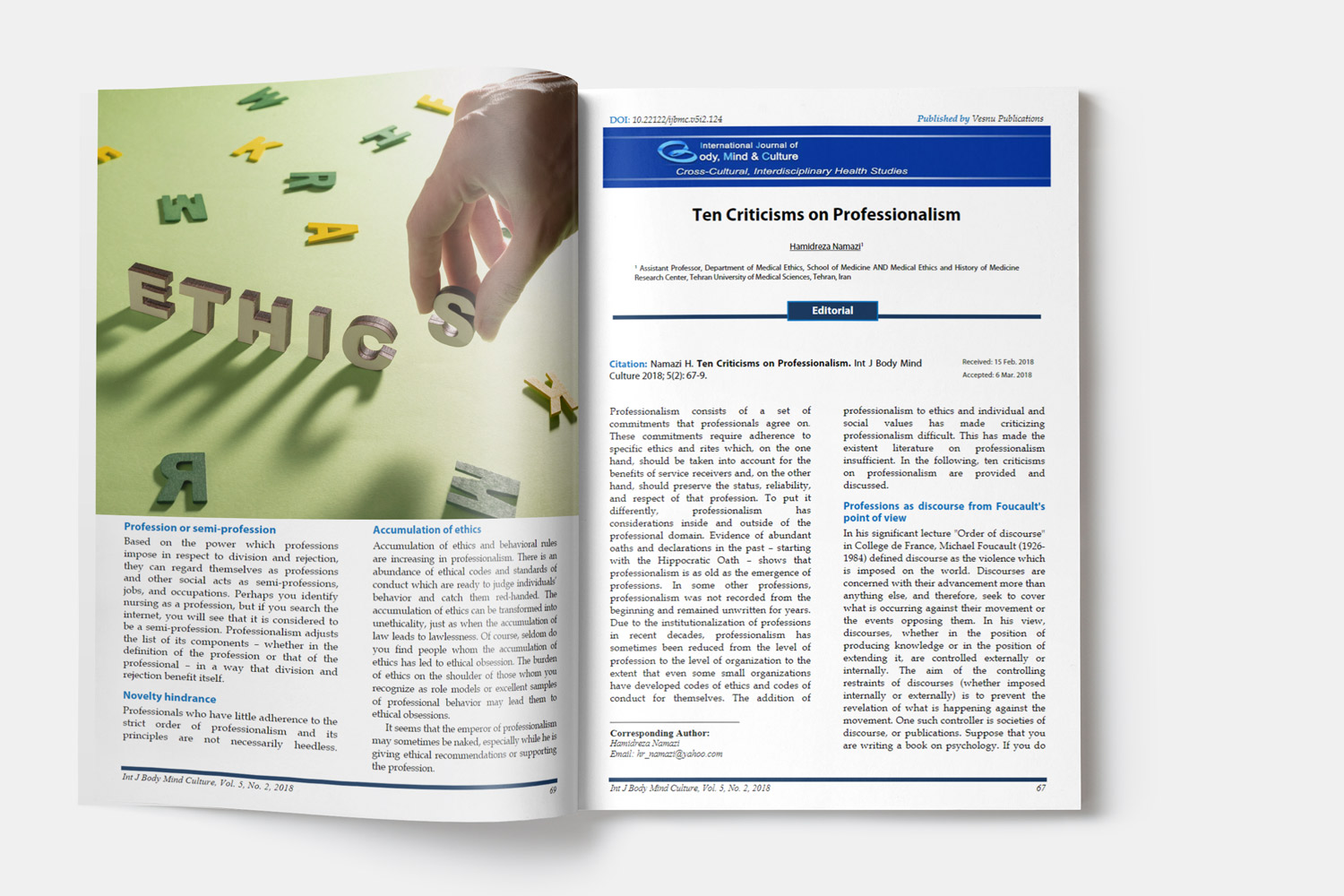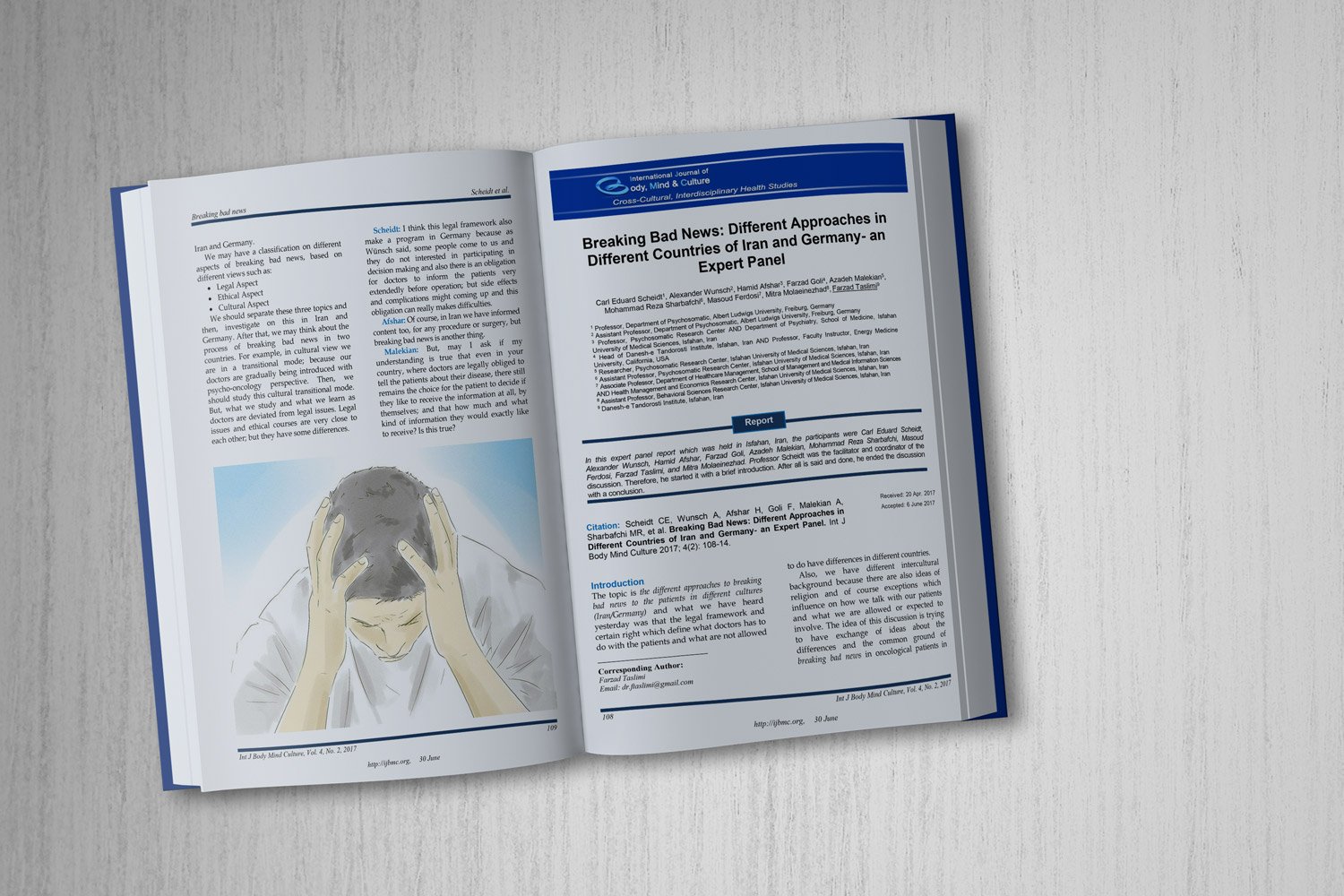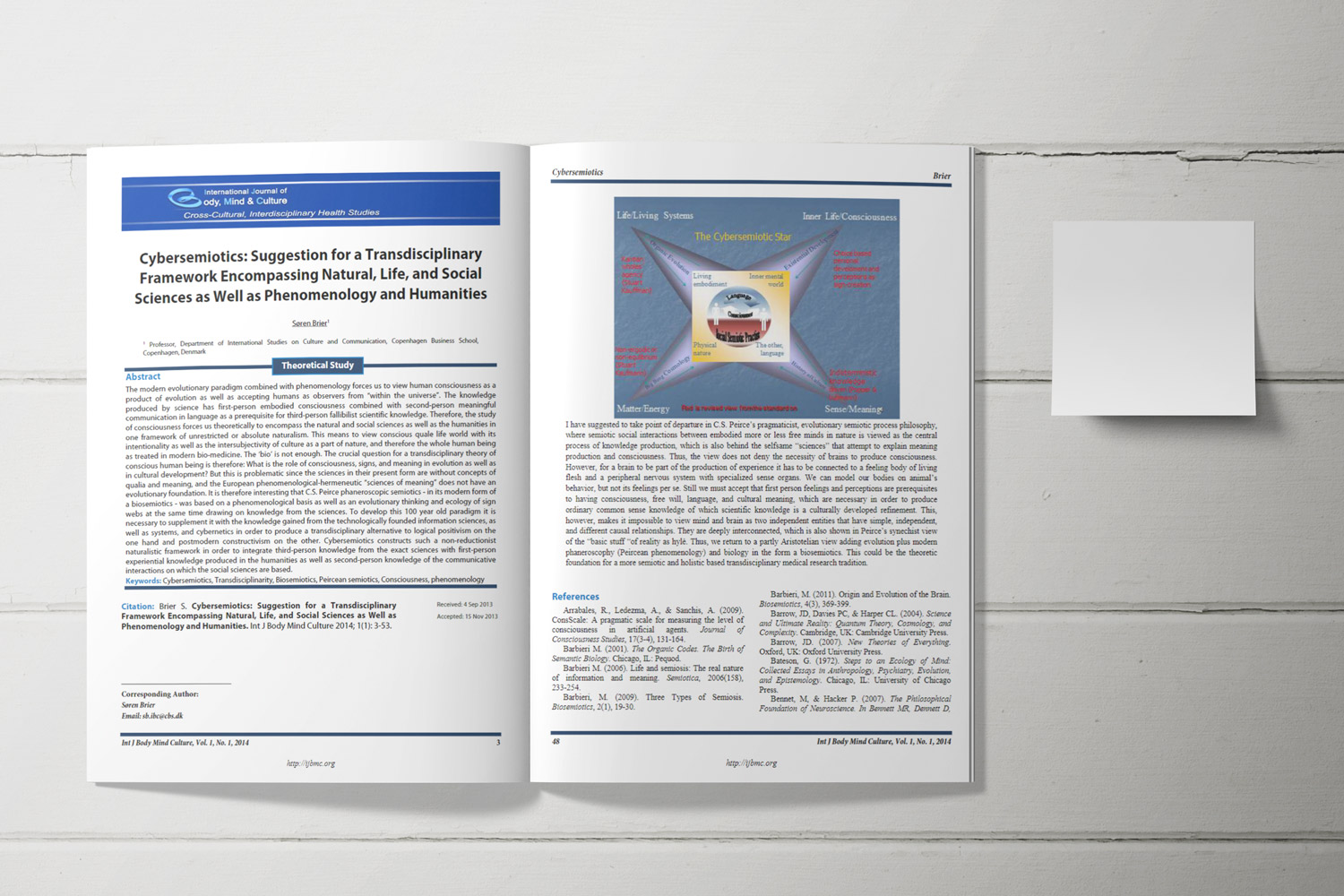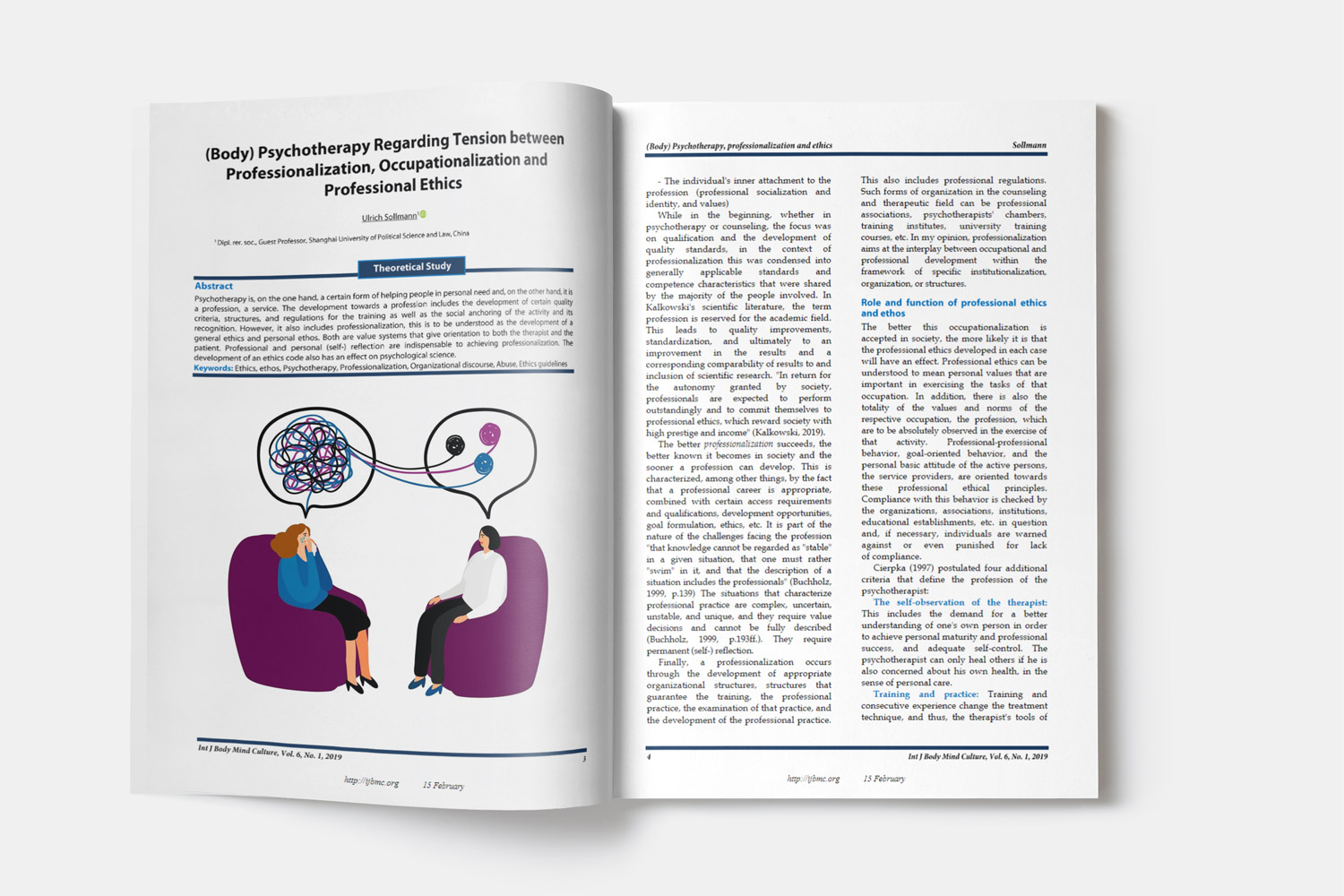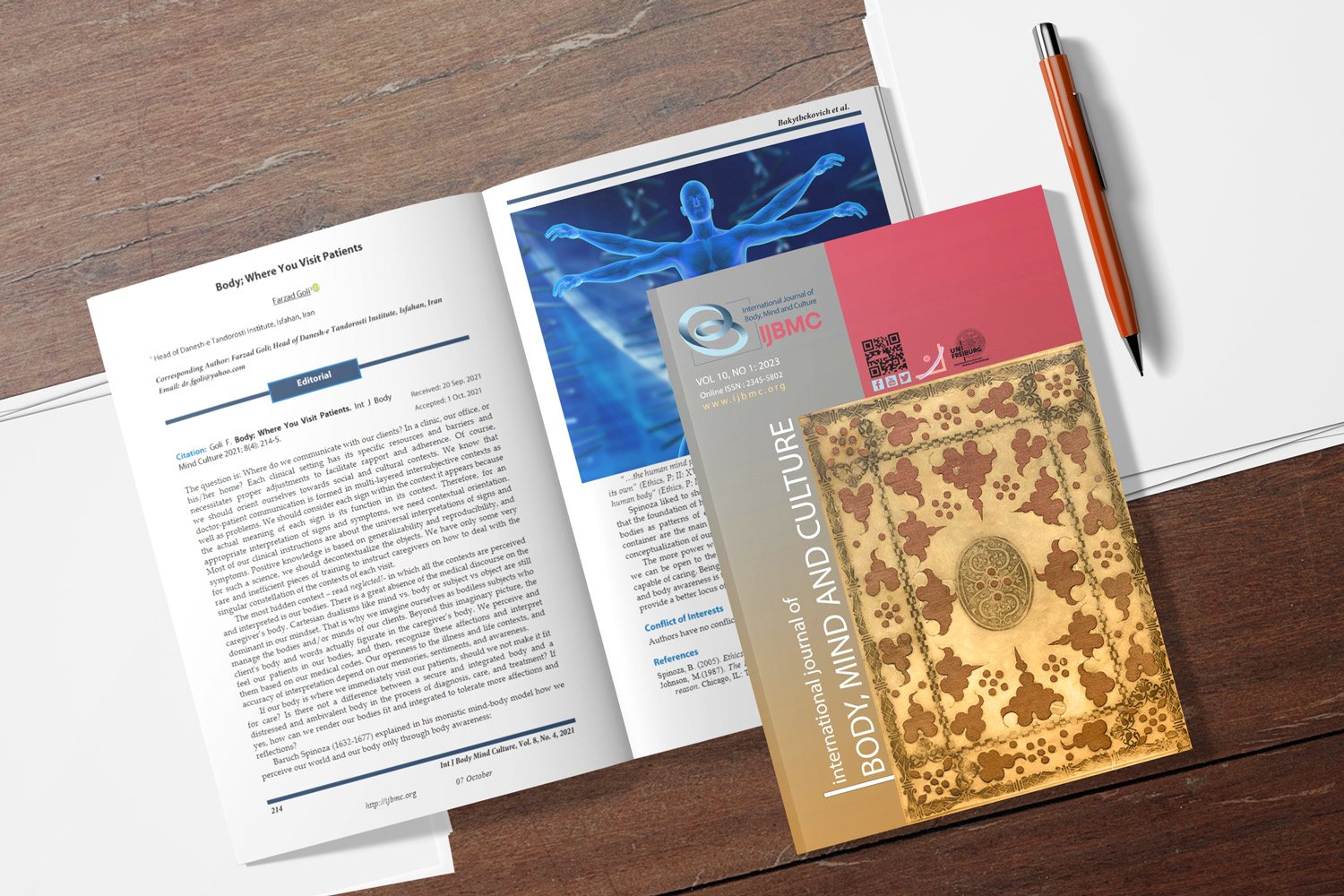Comparing the Effects of Mindfulness-Based Stress Reduction and Cognitive Behavioral Therapy on the Quality of Life of Patients with Cardiovascular Disease
Downloads
Background: Cardiovascular disease (CVD) is a leading cause of death and disability worldwide which is still highly prevalent despite dramatic medical advances. According to the statistics provided by the World Health Organization (WHO) in 2014, CVD-related mortality rate in Iran is 46%. This study aimed to compare the effectiveness of Mindfulness-based stress reduction (MBSR) and cognitive behavioral therapy (CBT) on quality of life (QOL) in patients with CVDs.
Methods: This was a single-blind randomized controlled trial. In total, 60 patients with CVDs were recruited. Patients were allocated to the MBSR and CBT groups. Patients in the MBSR and CBT groups received intervention in 8, 2.5-hour sessions. The main outcome was QOL which was measured by the MacNew Quality of Life after Myocardial Infarction (QLMI) questionnaire. Data were analyzed using analysis of covariance (ANCOVA) in SPSS software.
Results: ANCOVA revealed a significant difference between the MBSR group and CBT group regarding the post-test values of QOL (P = 0.001).
Conclusion: This study revealed that MBSR and CBT are effective in reducing the QOL of patients with CVDs.
Downloads
Al-Mallah, M. H., Farah, I., Al-Madani, W., Bdeir, B., Al, Habib S., Bigelow, M. L. et al. (2016). The impact of nurse-led clinics on the mortality and morbidity of patients with cardiovascular diseases: A systematic review and meta-analysis. J Cardiovasc.Nurs, 31(1), 89-95. doi:10.1097/JCN.0000000000000224 [doi]. Retrieved from PM:25658181
Baer, R. A. (2005). Mindfulness-Based Treatment Approaches: Clinician's Guide to Evidence Base and Applications. Cambridge, MA: Academic Press.
Baer, R. A. (2006). Mindfulness training as a clinical intervention: A conceptual and empirical review. Clinical Psychology: Science and Practice, 10(2), 125-143.
Birnie, K., Speca, M., & Carlson, L. E. (2010). Exploring self-compassion and empathy in the context of mindfulness-based stress reduction (MBSR). Stress and Health, 26(5), 359-371.
Bishop, S. R., Lau, M., Shapiro, S., Carlson, L., Anderson, N. D., Carmody, J. et al. (2006). Mindfulness: A Proposed Operational Definition. Clinical Psychology: Science and Practice, 11(3), 230-241.
Blom, K., How, M., Dai, M., Baker, B., Irvine, J., Abbey, S. et al. (2012). Hypertension analysis of stress reduction using mindfulness meditatiON and yoga (The harmony study): study protocol of a randomised control trial. BMJ.Open., 2(2), e000848. doi:bmjopen-2012-000848 [pii];10.1136/bmjopen-2012-000848 [doi]. Retrieved from PM:22396225
Booth-Kewley, S., & Friedman, H. S. (1987). Psychological predictors of heart disease: a quantitative review. Psychol.Bull, 101(3), 343-362. Retrieved from PM:3602244
Brown, K. W., Ryan, R. M., & Creswell, J. D. (2007). Mindfulness: Theoretical Foundations and Evidence for its Salutary Effects. Psychological Inquiry, 18(4), 211-237.
Curiati, J. A., Bocchi, E., Freire, J. O., Arantes, A. C., Braga, M., Garcia, Y. et al. (2005). Meditation reduces sympathetic activation and improves the quality of life in elderly patients with optimally treated heart failure: a prospective randomized study. J Altern.Complement.Med, 11(3), 465-472. doi:10.1089/acm.2005.11.465 [doi]. Retrieved from PM:15992231
Ditto, B., Eclache, M., & Goldman, N. (2006). Short-term autonomic and cardiovascular effects of mindfulness body scan meditation. Ann.Behav.Med, 32(3), 227-234. doi:10.1207/s15324796abm3203_9 [doi]. Retrieved from PM:17107296
Ekman, P. (2003). Emotions Revealed: Recognizing Faces and Feelings to Improve Communication and Emotional Life. New York, NY: Henry Holt and Company.
Flugel Colle, K. F., Vincent, A., Cha, S. S., Loehrer, L. L., Bauer, B. A., & Wahner-Roedler, D. L. (2010). Measurement of quality of life and participant experience with the mindfulness-based stress reduction program. Complement.Ther Clin.Pract, 16(1), 36-40. doi:S1744-3881(09)00063-2 [pii];10.1016/j.ctcp.2009.06.008 [doi]. Retrieved from PM:20129408
Garland, E., Gaylord, S., & Park, J. (2009). The role of mindfulness in positive reappraisal. Explore.(NY.), 5(1), 37-44. doi:S1550-8307(08)00321-2 [pii];10.1016/j.explore.2008.10.001 [doi]. Retrieved from PM:19114262
Gasiorowski, A., & Dutkiewicz, J. (2013). Comprehensive rehabilitation in chronic heart failure. Ann.Agric Environ.Med, 20(3), 606-612. doi:1067448 [pii]. Retrieved from PM:24069873
Greeson, J. M. (2009). Mindfulness Research Update: 2008. Complement.Health Pract Rev., 14(1), 10-18. doi:10.1177/1533210108329862 [doi]. Retrieved from PM:20047019
Greeson, J. M., Webber, D. M., Smoski, M. J., Brantley, J. G., Ekblad, A. G., Suarez, E. C. et al. (2011). Changes in spirituality partly explain health-related quality of life outcomes after Mindfulness-Based Stress Reduction. J Behav.Med, 34(6), 508-518. doi:10.1007/s10865-011-9332-x [doi]. Retrieved from PM:21360283
Grossman, P., Niemann, L., Schmidt, S., & Walach, H. (2004). Mindfulness-based stress reduction and health benefits. A meta-analysis. J Psychosom.Res, 57(1), 35-43. doi:10.1016/S0022-3999(03)00573-7 [doi];S0022399903005737 [pii]. Retrieved from PM:15256293
Hofer, S., Lim, L., Guyatt, G., & Oldridge, N. (2004). The MacNew Heart Disease health-related quality of life instrument: a summary. Health Qual.Life Outcomes., 2, 3. doi:10.1186/1477-7525-2-3 [doi];1477-7525-2-3 [pii]. Retrieved from PM:14713315
Jafari, M., Yousefi, A., Noori, A. (2004). Validation of the quality of life macnew questionnaire for cardiac patients [MA Thesis]. Khorasgan, Iran: Khorasgan Branch, Islamic Azad University.
Kabat-Zinn, J., & Hanh, T. N. (2013). Full Catastrophe Living (Revised Edition): Using the Wisdom of Your Body and Mind to Face Stress, Pain, and Illness. New York, NY: Random House Publishing Group
Khayam Nekouei, Z., Yousefy, A., & Manshaee, Q. (2010). The Effect of Cognitive-Behavioral Therapy on the Improvement of Cardiac Patients' Life Quality. Iran J Med Educ, 10(2), 148-153.
Linehan, M. M. (1993). Diagnosis and treatment of mental disorders. Skills training manual for treating borderline personality disorder. New York, NY: Guilford Press.
Longo, D., Fauci, A., Kasper, D., Hauser, S., Jameson, J., & Loscalzo, J. (2011). Harrison's Principles Of Internal Medicine. New York, NY: McGraw-Hill Education.
Mackay, J., Mensah, G., Mendis, S., & Greenlund, K. (2004). Mackay, Judith, Mensah, George, Mendis, Shanthi, Greenlund, Kurt & World Health Organization. Dept. of Management of Noncommunicable Diseases. (‎2004)‎. The atlas of heart disease and stroke / Judith Mackay and George Mensah; with Shanthi Mendis and Kurt Greenland. Geneva: World Health Organization. Geneva, Switzerland: World Health Organization.
Maremmani, I., Pani, P. P., Pacini, M., & Perugi, G. (2007). Substance use and quality of life over 12 months among buprenorphine maintenance-treated and methadone maintenance-treated heroin-addicted patients. J Subst.Abuse Treat, 33(1), 91-98. doi:S0740-5472(06)00369-2 [pii];10.1016/j.jsat.2006.11.009 [doi]. Retrieved from PM:17588494
Masumian, S., Shairi, M. R., & Hashemi, M. (2013). The Effect of Mindfulness-Based Stress Reduction on Quality of Life of the Patients with Chronic Low Back Pain. J Anesth Pain, 4(1), 25-37.
Miller, J. J., Fletcher, K., & Kabat-Zinn, J. (1995). Three-year follow-up and clinical implications of a mindfulness meditation-based stress reduction intervention in the treatment of anxiety disorders. Gen.Hosp.Psychiatry., 17(3), 192-200. doi:016383439500025M [pii]. Retrieved from PM:7649463
Momeni, J., Omidi, A., Raygan, F., & Akbari, H. (2016). The effects of mindfulness-based stress reduction on cardiac patients' blood pressure, perceived stress, and anger: a single-blind randomized controlled trial. J Am.Soc.Hypertens., 10(10), 763-771. doi:S1933-1711(16)30448-X [pii];10.1016/j.jash.2016.07.007 [doi]. Retrieved from PM:27632925
Moulaert, V. R., Wachelder, E. M., Verbunt, J. A., Wade, D. T., & van Heugten, C. M. (2010). Determinants of quality of life in survivors of cardiac arrest. J Rehabil Med, 42(6), 553-558. doi:10.2340/16501977-0547 [doi]. Retrieved from PM:20549160
Nyklicek, I., & Kuijpers, K. F. (2008). Effects of mindfulness-based stress reduction intervention on psychological well-being and quality of life: is increased mindfulness indeed the mechanism? Ann.Behav.Med, 35(3), 331-340. doi:10.1007/s12160-008-9030-2 [doi]. Retrieved from PM:18535870
Omidi, A., Momeni, J., Raygan, F., Akbari, H., & Talighi, E. (2017). The effectiveness of mindfulness-based stress reduction program on quality of life among patients with cardiovascular diseases. Journal of Andisheh va Raftar (Applied Psychology), 10(42), 7-16.
Park, K. (2002). Park's Textbook of preventive and social medicine. Bhopal, India: Banarsidas Bhanot.
Parswani, M. J., Sharma, M. P., & Iyengar, S. (2013). Mindfulness-based stress reduction program in coronary heart disease: A randomized control trial. Int.J Yoga., 6(2), 111-117. doi:10.4103/0973-6131.113405 [doi];IJY-6-111 [pii]. Retrieved from PM:23930029
Praissman, S. (2008). Mindfulness-based stress reduction: a literature review and clinician's guide. J Am.Acad.Nurse.Pract, 20(4), 212-216. doi:JAAN306 [pii];10.1111/j.1745-7599.2008.00306.x [doi]. Retrieved from PM:18387018
Reibel, D. K., Greeson, J. M., Brainard, G. C., & Rosenzweig, S. (2001). Mindfulness-based stress reduction and health-related quality of life in a heterogeneous patient population. Gen.Hosp.Psychiatry., 23(4), 183-192. doi:S0163-8343(01)00149-9 [pii]. Retrieved from PM:11543844
Rozanski, A., Blumenthal, J. A., & Kaplan, J. (1999). Impact of psychological factors on the pathogenesis of cardiovascular disease and implications for therapy. Circulation, 99(16), 2192-2217. Retrieved from PM:10217662
Rozanski, A., Blumenthal, J. A., Davidson, K. W., Saab, P. G., & Kubzansky, L. (2005). The epidemiology, pathophysiology, and management of psychosocial risk factors in cardiac practice: the emerging field of behavioral cardiology. J Am.Coll.Cardiol., 45(5), 637-651. doi:S0735-1097(04)02390-3 [pii];10.1016/j.jacc.2004.12.005 [doi]. Retrieved from PM:15734605
Shapiro, S. L., Schwartz, G. E., & Bonner, G. (1998). Effects of mindfulness-based stress reduction on medical and premedical students. J Behav.Med, 21(6), 581-599. Retrieved from PM:9891256
Sotile, W. M. (2005). Biopsychosocial care of heart patients: Are we practicing what we preach? Families, Systems, & Health, 23(4), 400-403.
Sperry, L. (2009). Treatment of chronic medical conditions: Cognitive-behavioral therapy strategies and integrative treatment protocols. Washington, DC: American Psychological Association.
Stiell, I., Nichol, G., Wells, G., De, Maio, V, Nesbitt, L., Blackburn, J. et al. (2003). Health-related quality of life is better for cardiac arrest survivors who received citizen cardiopulmonary resuscitation. Circulation, 108(16), 1939-1944. doi:10.1161/01.CIR.0000095028.95929.B0 [doi];01.CIR.0000095028.95929.B0 [pii]. Retrieved from PM:14530198
White, C. A. (2011). Cognitive Behaviour Therapy for Chronic Medical Problems: A Guide to Assessment and Treatment in Practice. Trans. Moloudi, R., Fattahi, k. Tehran, Iran: Arjmand Publications.
Williams, R. B. (1987). Refining the Type A hypothesis: Emergence of the hostility complex. The American Journal of Cardiology, 60(18), J27-J32.
Witek-Janusek, L., Albuquerque, K., Chroniak, K. R., Chroniak, C., Durazo-Arvizu, R., & Mathews, H. L. (2008). Effect of mindfulness based stress reduction on immune function, quality of life and coping in women newly diagnosed with early stage breast cancer. Brain.Behav.Immun., 22(6), 969-981. doi:S0889-1591(08)00039-1 [pii];10.1016/j.bbi.2008.01.012 [doi]. Retrieved from PM:18359186
World Health Organization. (1995). The World Health Organization Quality of Life assessment (WHOQOL): Position paper from the World Health Organization. Soc.Sci Med, 41(10), 1403-1409. doi:027795369500112K [pii]. Retrieved from PM:8560308
World Health Organization (2014). Noncommunicable diseases country profiles 2014, Iran. Available from: http://www.who.int/nmh/countries/irn_en.pdf?ua=1. Accessed 2014









